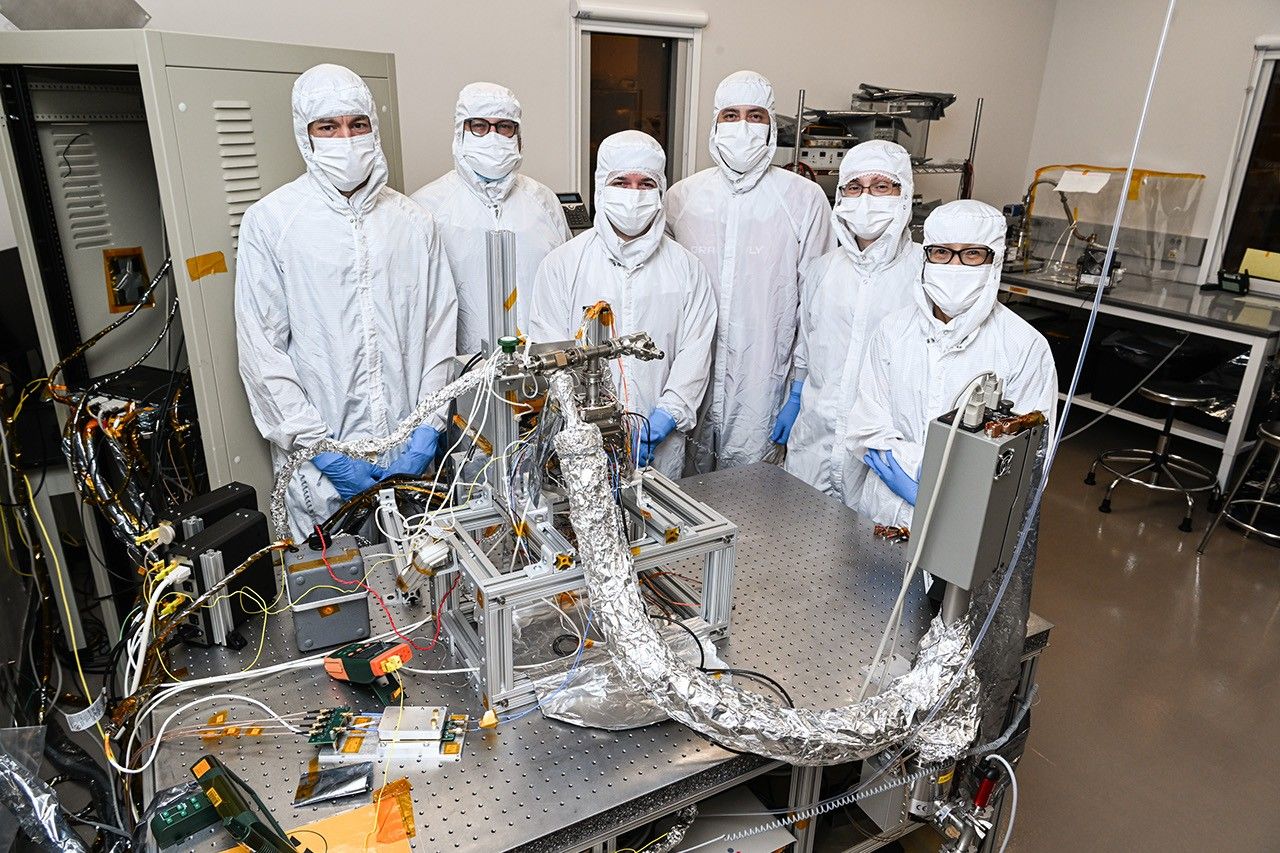NASA’s Dragonfly Soaring Through Key Development, Test Activities

ETD Role: Scientists and engineers at NASA’s Goddard Space Flight Center in Greenbelt, Maryland, have completed a critical part of the Dragonfly Mass Spectrometer (DraMS), which will analyze chemical components and processes on Titan, including potentially biologically relevant compounds. The Ion Trap Mass Spectrometer, effectively the “heart” of the DraMS package, has cleared its acceptance review and is being prepared for space-environment tests and integration with other DraMS components.
NASA’s Dragonfly mission has cleared several key design, development and testing milestones and remains on track toward launch in July 2028.
Dragonfly, a car-sized, nuclear-powered rotorcraft being designed and built for NASA at the Johns Hopkins Applied Physics Laboratory (APL) in Laurel, Maryland, will explore Saturn’s moon Titan. Following launch and a six-year journey to Titan, the Dragonfly rotorcraft will spend over three years investigating multiple landing sites across the moon’s diverse surface. Flying a comprehensive science package, Dragonfly seeks to understand Titan habitability and the building blocks of life as we know it.
Hardware is being built and software developed, tests are being completed and analyses verified as the team progresses through its development schedule.
“Dragonfly has moved far beyond a concept on a computer screen – the components of the rotorcraft lander are being built as scientists and engineers transform this bold exploration idea into reality,” said Elizabeth “Zibi” Turtle, Dragonfly principal investigator from APL. “From the cleanrooms to the wind tunnels, we’re performing critical tests that are informing our next steps of development and demonstrating how Dragonfly will perform on and above Titan’s surface.”
Recent tests have included aerodynamic analyses of Dragonfly’s rotors and durability trials of the foam coating that will insulate the rotorcraft from Titan’s frigid temperatures. The science payload is also coming together, with instrument components delivered and set up for additional testing. Flight systems are also being evaluated and the flight radio has been delivered and…
